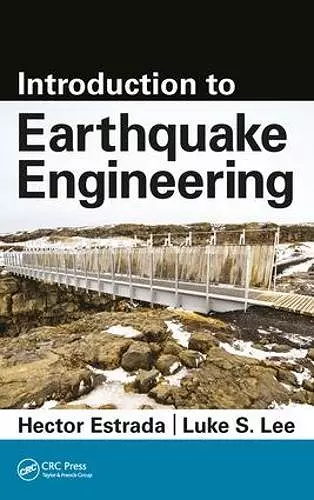Introduction to Earthquake Engineering
Hector Estrada author Luke S Lee author
Format:Hardback
Publisher:Taylor & Francis Inc
Published:25th May '17
Currently unavailable, and unfortunately no date known when it will be back

This book is intended primarily as a textbook for students studying structural engineering. It covers three main areas in the analysis and design of structural systems subjected to seismic loading: basic seismology, basic structural dynamics, and code-based calculations used to determine seismic loads from an equivalent static method and a dynamics-based method. It provides students with the skills to determine seismic effects on structural systems, and is unique in that it combines the fundamentals of structural dynamics with the latest code specifications. Each chapter contains electronic resources: image galleries, PowerPoint presentations, a solutions manual, etc.
"…a very practical and useful book for introducing earthquake engineering to college level students."
—Jay Lin, AECOM, Oakland, California, USA
"An invaluable resource of encyclopedic information and academic/technical knowledge that takes the reader step-by-step to the concept of earthquake engineering, its impact and our mitigation measures through mathematics."
— Daniel Tsavdaridis, University of Leeds, United Kingdom
"… the book contents fit nicely with senior-level students that would introduce and engage them to learn more about earthquake engineering. The authors did a great job in introducing the concepts involved in earthquake engineering without sacrificing the needed rigor to tackle structural dynamics topics. The illustrations in this textbook are very effective."
— Amjad J. Aref, University of Buffalo, New York, USA
"This book fully covers the course content of my course, it is simple and does not confuse the students with a lot of extra information. I really like the idea of the solutions to example problems prepared using computer programming methods."
—Constantinos Repapis, Piraeus University of Applied Sciences, Aigaleo, Greece
"The book has been written in plain English explaining in details phenomena that could be challenging for beginners. It also expounded the different types of earthquakes and their origins, similarities and differences. The book is designed for engineering students but I believe that it includes some good information for students from different backgrounds."
—Nebil Achour,Anglia Ruskin University, Cambridge, United Kingdom
"Technically, this book is admirable – the applied mathematics used to describe how structural systems respond to dynamic actions never fail to impress. The book’s text and arrangement leads the reader step by step through a hugely complex subject, and the distillation of that subject into a relatively short work is equally impressive. Its potential wider readership outside the US student population ranges from the many engineers who are involved in the seismic qualification of structures and who wish to better understand the dynamic analysis software they regularly use, to those from other countries who are considering an extended professional assignment within the USA. The former will find it a handy aide-memoire to have on their bookshelf and the latter will find it simply invaluable."
—Structures and Buildings, February 2018
ISBN: 9781498758260
Dimensions: unknown
Weight: 612g
266 pages